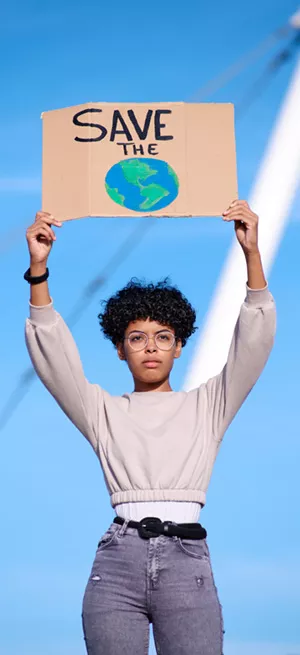Carbon emissions from the world’s 20 biggest economies are rising. None of the G20 countries have plans that will put them on track to limit global warming to 1.5°C, despite the fact that most are technically capable and have economic incentives. To keep the Paris Agreement’s 1.5°C goal within reach, G20 countries will have to increase their 2030 emission targets by 2020 and significantly scale up mitigation, adaptation and finance over the next decade.
These findings are detailed in the new ‘Brown to Green Report 2019’ published today by the Climate Transparency partnership, an international research collaboration. The report is the most comprehensive review of G20 countries’ climate performance, mapping achievements and drawbacks in their efforts to reduce emissions, adapt to climate impacts and green the financial system.
Many of the current 2030 climate targets under the Paris Agreement (Nationally Determined Contributions - NDCs) are too weak, with about half of the G20 countries projected to meet or overachieve their inadequate NDCs. There is plenty of room for enhanced ambition among all G20 countries. “Just one year before the critical deadline the findings give us hope that countries will find the political will to commit to higher emission reduction targets in 2020 as they promised under the Paris Agreement”, says Alvaro Umaña, the Co-Chair of Climate Transparency and Former Minister of Environment and Energy of Costa Rica. “For the first time, the report identifies untapped potential and key opportunities for countries to ramp up ambition and as such will be a valuable tool for governments when they update their climate plans.”
Key findings for the G20:
● Energy-related CO2 emissions in G20 countries shot up by 1.8% in 2018 due to rising energy demand. Energy supply is not getting cleaner: despite a more than 5% rise in G20 total renewable energy supply in 2018, the share of fossil fuels in the G20 energy mix remains at 82%.
● In 2018, G20 emissions in the power sector increased by 1.6%. While renewables now account for 25.5% of power generation, this is not sufficient to outweigh the growth of emissions from fossil fuel sources. Coal needs to be phased out by 2030 in OECD countries and by 2040 globally.
● G20 transport emissions increased by 1.2% in 2018. Low-carbon fuels accounted for less than 6% of the fuel mix. They need to increase roughly ten times by 2050 to keep global warming below 1.5°C. G20 countries need to scale up their policies to ban new fossil fuel cars by 2035 at the latest, reduce emissions from freight transport to net-zero by 2050 and shift towards non-motorised and sustainable public transport. Cutting government subsidies to the aviation sector, taxing jet fuel and using revenues to invest massively in new carbon free fuels would leverage huge emissions reductions and health benefits.
● G20 emissions in the building sector grew more than in any other sector in 2018 (4.1%). Retrofitting existing buildings challenges all G20 and especially OECD countries. New buildings have to be near zero-energy by 2020/25 to keep global warming below 1.5°C.
● G20 countries still provided more than US$ 127 billion in fossil fuel subsidies in 2017. Subsidies have shown a decrease in nine G20 countries (partly due to falling fuel prices), but subsidies for natural gas infrastructure and production have remained stable or increased in many countries (despite lower prices). Diverting only a fraction of these fossil fuel subsidies towards renewables could pay for the clean energy transition and reduce emissions significantly.
“Overall CO2 emissions go up in all sectors, but we’re seeing some frontrunners emerging that others can learn from, like China's policies for promoting electric vehicles and public transport”, says Lena Donat (Germanwatch), one of the report’s lead authors. “In order for the Paris Agreement to succeed, it is clear that the G20 countries need to be climate leaders and pave the way for solutions that developing countries can benefit from.” The G20 countries are responsible for approximately 80% of global GHG emissions.
This year’s report analyses G20 countries’ performance along 80 indicators for climate mitigation, finance and adaptation against global 1.5°C benchmarks. The 2019 report “Brown to Green: The G20 transition towards a net-zero emissions economy” is the 5th annual review of G20 climate action by Climate Transparency.
Key Findings: Country performance compared / Leaders and laggards
Vulnerability & Adaptation
Extreme weather events led to around 16,000 deaths and economic losses of US$ 142 billionin G20 countries on average every year (1998-2017). Russia, France, Italy, Germany and India are highest ranked in terms of losses. Limiting global temperature increase to 1.5°C instead of 3°C avoids over 70% of climate-related impacts in the water, health and agriculture sectors. Brazil and Mexico are highly exposed to water scarcity at 1.5°C, while Brazil, France, Italy and Turkey are highly exposed to droughts. To reduce their climate vulnerability all G20 countries have an adaptation plan, except Saudi Arabia.
Mitigation
NDCs: China, the EU and its G20 member states, India, Indonesia, Russia, Saudi Arabia and Turkey are projected to meet or surpass their NDC targets, excluding land use, land-use change, and forestry (LULUCF) emissions. This indicates that the NDC targets are not yet “highest possible ambition” as required by the Paris Agreement. India has the most ambitious NDC compared to its fair share of global emissions to limit global warming to 1.5°C. However, India still needs to act now to prepare sectors for stringent emission reductions. South Korea, Canada and Australia are the G20 countries furthest off track from implementing their already unambitious NDCs. To limit global warming to 1.5°C, all G20 countries need to strengthen their NDCs. This report underscores that there is plenty of room to scale up climate action for the 2020 NDC update.
Long-term strategies: Canada, France, Germany, Japan, Mexico, the UK and the US have submitted their long-term strategies for 2050 to the United Nations Framework Convention on Climate Change (UNFCCC). Argentina, China, the EU, India, South Africa, South Korea and Russia are currently preparing strategies. France and the UK set a precedence by enshrining net-zero carbon/GHG emissions targets by 2050 in law.
Energy supply: 82% of the G20 energy mix continues to come from fossil fuels. The total primary energy supply of fossil fuels in 2018 increased in Australia, Canada, China, India, Indonesia, Russia, South Africa, South Korea and the US. The energy efficiency of the G20 countries has improved since 1990, but annual efficiency gains are slowing down.
Power: India is the country currently investing most in renewable energy, while Brazil and Germany are the only G20 countries with long-term renewable energy strategies. Brazil leads with 82.5% renewables, while Saudi Arabia, South Korea and South Africa lag behind with shares of only 0-5%. A coal phase-out plan is needed in Australia, China, India, Indonesia, Japan, Mexico, Russia, South Africa, Turkey and the US. Indonesia and Turkey are burning more coal for electricity – their power emissions increased the most in 2018. France, Brazil and the UK reduced emissions in the power sector considerably in 2018 by moving away from fossil fuel power generation.
Transport: Canada, France, Japan and the UK are leading in banning the sale of fossil fuelbased cars. China nearly doubled the share of electric vehicles within one year and has the most ambitious policies to shift towards public transport. The US (24 times the levels of India), Canada and Australia have the highest transport emissions per capita. G20 aviation emissions are increasing rapidly with Australia, the US and the UK having the highest flight emission per capita.
Buildings: The US, Australia and Saudi Arabia had the highest building emissions per capita including electricity-based emissions in 2018. They also lack ambitious policies for substantially reducing emissions in the sector. The EU countries lead with 1.5°C compatible strategies for zero-energy new buildings. The EU, Germany and France are the only G20 members with long-term strategies for retrofitting of buildings in place, but the current annual renovation rate is not on track for a 1.5° pathway.
Industry: The emission intensity of the industry sector is the highest in Russia, India and China. At the same time, India and China are among the G20 countries with the most progressive energy efficiency policies.
Agriculture and land-use: In 2016, G20 GHG emissions from agriculture decreased slightly by 0.4%. Livestock breeding accounts for 40% of agricultural emissions in G20 countries, and indirectly causes emissions through the displacement of forest for grazing and pasture. While Argentina, Brazil and Indonesia have some policies to reduce deforestation or support afforestation, Australia and Canada lack any policies. India, China and Mexico rank high for their long-term deforestation policies.
Finance
Financial policies and regulations: All G20 countries have started to discuss green financial principles but emerging economies lead the way. Brazil and France are the only G20 countries with mandatory climate-related disclosure requirements, whereas Indonesia is the only G20 country with mandatory climate-related risk assessment by financial institutions. Both India and China have mandatory policies for commercial banks to incentivise green loans.
Fiscal policy: G20 countries, excluding Saudi Arabia (no comparable data), provided about US$ 127 billion in subsidies to coal, oil and gas in 2017 – a decrease from US$ 248 billion in 2013. This is partly linked to a dramatic fall in oil, gas and coal prices over this time period. Subsidies to natural gas infrastructure and production have increased in several countries. Canada, Argentina and Indonesia are among the countries that have saved billions of dollars by cutting incentives or subsidies to fossil fuels in recent years.
On average, about 70% of CO2 emissions in G20 countries are unpriced, or priced insufficiently, with Russia, having the highest carbon pricing gap followed by Indonesia, Brazil and China. However, the number of G20 countries that already have or are in the process of introducing explicit carbon pricing schemes is growing. Newcomers in 2018/2019 were South Africa and Argentina.
Public finance: G20 public institutions still financed coal and coal-fired power production internationally at US$ 17 billion and domestically at US$ 11 billion on average per year between 2016-2017. Ending coal finance is one of the most crucial steps to achieving the Paris goals. The biggest G20 financiers overseas are China, Japan and South Korea. Public financial institutions in Brazil, Canada, China, France, Germany, the UK and the US restrict public spending for coal.
Media contacts:
Europe:
Stefan Küper, Germanwatch, +49 151 252 110 72, kueper@germanwatch.org (based in Germany)
Hannah Schindler, HUMBOLDT-VIADRINA Governance Platform, +49 176 477 190 07, hschindler@governance-platform.org (based in Germany)
About Climate Transparency
Climate Transparency is a global partnership that brings together experts from research organisations and NGOs in the majority of the G20 countries. Our mission is to encourage ambitious climate action in the G20 countries: we inform policy makers and stimulate national debate.
About the Brown to Green Report
The Brown to Green Report is the world’s most comprehensive annual review of G20 countries’ climate action and their transition to a net zero emissions economy. The independent, in-depth assessment draws on the latest analysis of international renowned dat sets such as the OECD, World Bank and IEA, as well as qualitative data from leading global experts in the field. The review is based on 80 indicators for adaptation, mitigation and finance compared against 1.5°C global benchmarks and aims to make good practices and gaps transparent. The summary report and 20 country profiles allows the report to be a clear reference tool for decision makers. This year’s policy assessment is more detailed than previous ones. The report features a novel analysis of climate impacts in G20 countries, their adaptation plans and their policies for greening the financial system.


